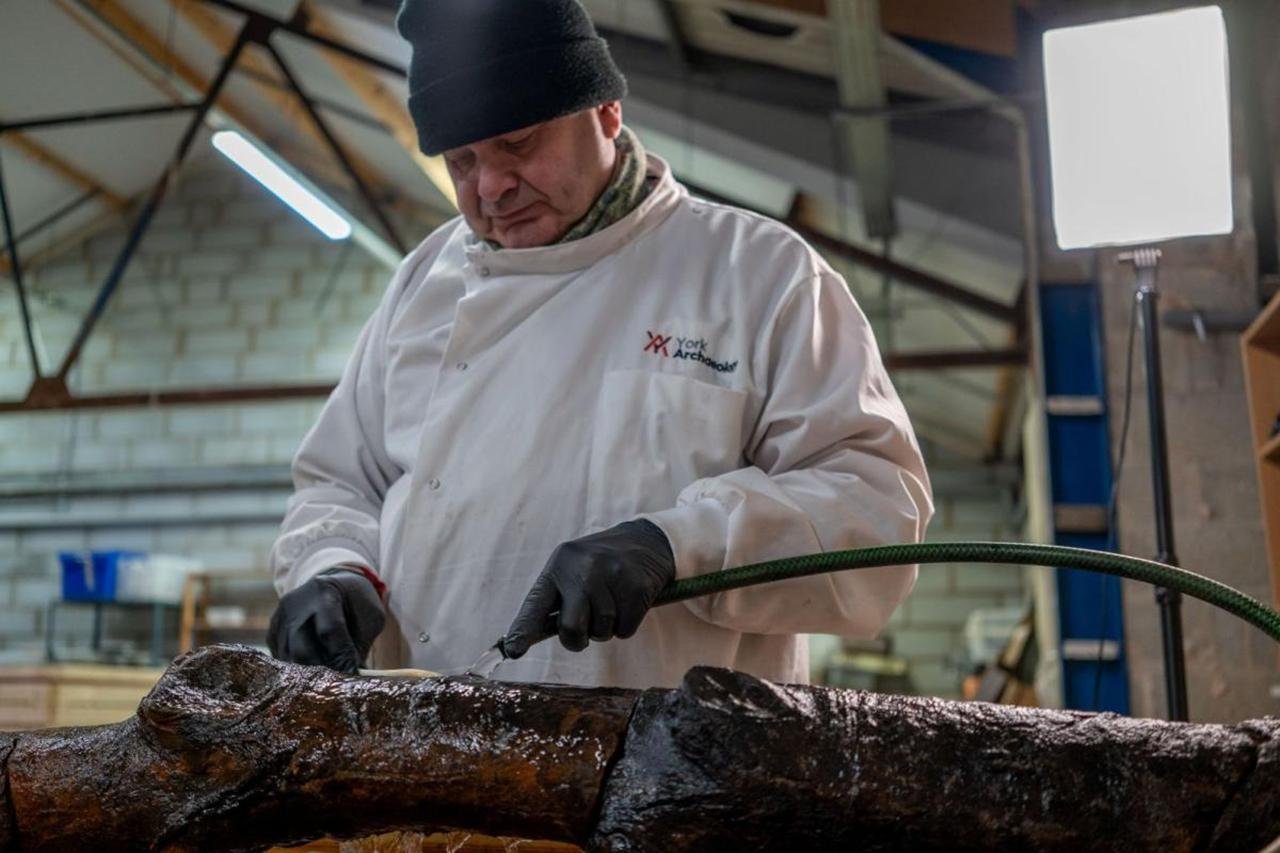Archaeologists have uncovered the remains of the first surviving wooden stake defenses from the English Civil War at the site of Sheffield Castle. This discovery provides an interesting link to one of the most tumultuous periods in British history. The discovery is part of an ongoing excavation by WesSєx Archaeology as part of Sheffield City Council’s Castlegate regeneration project.
 The wooden stakes were discovered in the moat of Sheffield Castle. Credit: WesSєx Archaeology
The wooden stakes were discovered in the moat of Sheffield Castle. Credit: WesSєx Archaeology
Researchers unearthed several wooden stakes, each about 1 meter long, during their dig in the castle’s moat. Made from ash and elm and crudely sharpened to points, these stakes were driven into the ground in front of the castle’s medieval gatehouse. They formed an “abatis,” a defensive barricade designed to slow down attackers and expose them to defenders’ firepower. The stakes were arranged chaotically, forming an effective obstacle called a “killing zone.”
“Records show that the castle finally succumbed to Parliamentarian forces after a 10-day siege in August 1644,” explained Ashley Tuck, the lead archaeologist from WesSєx Archaeology. “We know that these timbers and the abatis they formed were ultimately unsuccessful in protecting the castle from destruction, but they paint a picture of the brutalities of the war and add to our understanding of this turbulent period in Sheffield’s past.”
Tuck emphasized the rarity of this find: “So often we are told about Civil War defenses like abatises being used at historic properties across the country, but usually there is little to see of these important features. To be able to hold the very wood to which the defenders of Sheffield Castle trusted their lives is extraordinary.”
 Battle of Naseby, by an unknown artist. The victory of the Parliamentarian New Model Army over the Royalist army at the Battle of Naseby in 1645 marked the decisive turning point in the English Civil War. Public domain
Battle of Naseby, by an unknown artist. The victory of the Parliamentarian New Model Army over the Royalist army at the Battle of Naseby in 1645 marked the decisive turning point in the English Civil War. Public domain
The exceptional preservation of the stakes is due to the conditions in which they were buried. When Parliamentarian forces captured Sheffield Castle, it was demolished, with much of its debris buried in the castle moat. The waterlogged environment created an oxygen-free setting that prevented organic material from decaying.
Tool marks on the stakes were also identified by archaeologists, suggesting they were crafted hastily, likely in anticipation of the imminent siege. Some stakes still had bark, and some axe marks suggest that the defenders had very little time to refine their construction.
Sheffield Castle has long been regarded as the birthplace and a symbol of the power of the city. It was originally built as a motte-and-bailey castle after the Norman Conquest in 1066 and was later expanded and fortified. Among the notable figures in its history was Mary, Queen of Scots, who was intermittently imprisoned there from 1570 to 1584. The castle played a crucial role during the English Civil War when it finally fell to the Parliamentarian forces, who then ordered its destruction.
Following their excavation, the wooden stakes are currently being carefully conserved at York Archaeology. Once preservation is complete, they will be transferred to the Sheffield Museums Trust for public display. However, Tuck said that there might be many more surprises at the site waiting to be discovered.
More information: WesSєx Archaeology





